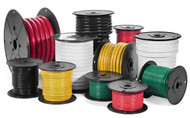You don’t have to be an electrical engineer to know that water and electricity do not mix well. It follows logic that, despite high humidity and ocean spray, there must be ways to protect electrical systems at sea which enables all of the devices that help keep mariners safe and comfortable. In fact, there are extensive standards for and numerous innovative improvements that have been made to Marine Electrical Cable which contribute to the easy implementation of electrical devices at sea. This article will help you understand the basics of who created marine electrical cable standards, how you can locate products that follow them, and why they are important.
1. The Society of Automotive Engineers
The Society of Automotive Engineers is the largest automotive association in the world whose goal is to improve the knowledge and science of vehicles and motor systems. Their legacy is such that their word is close to law when it comes to standards for products, pulling on the knowledge of thousands of professional engineers, researchers, and even professors. Most relevant standards for marine electrical cable come from the SAE, which tries to proliferate knowledge about safety and help professionals, locate quality supplies in addition to their other information-spreading pursuits.
Becoming familiar with the SAE is one of the best ways to keep up-to-date on new technology, changes in regulations, and new discoveries that could impact your electrical system designs at sea. The SAE’s website is a treasure trove of helpful information, guides to products, and opportunities to connect with other tradespeople.
2. Finding Certified Products
Thankfully, finding certified products is generally quite straightforward. Most products that have received a certification or endorsement from the SAE will list this on the packaging or in the product documentation. However, if you have doubts about a specific product’s authenticity you can always check the SAE’s “Counterfeit Parts Blog,” which regularly updates with warnings, information, and known offenders for the good of the engineering community at large. Additionally, the SAE can be contacted in the case that you suspect possible fraudulent display of certifications.
3. Why SAE Standards Are Important
One of the greatest challenges of marine electrical system design above and beyond the water at sea is the other substances and environmental factors that electrical systems are likely to come into contact with. Oils, minerals, cleaning solutions, and protectant agents are all potential hazards to your electrical cables at sea, meaning that quality cables need to have insulation that is guaranteed to resist likely hazards.
Creating insulation that can resist corrosive substances is no easy task, requiring extensive research and the solidification of reliable formulas for insulation creation. As a result, tradespeople who are not scientists need trustworthy sources that can verify that the design of the cables and their insulation has been carried out correctly. This is where groups like the SAE come in.
Having regulatory bodies that exist for the public good, pulling on the talents and knowledge of some of the world’s brightest engineers means that industry and trade flourish for everyone. In addition, groups like the SAE tend to help make various industries considerably safer as a whole, both for workers and consumers of the final products of automotive work.
If you need to buy new marine electrical supplies for your project, come visit us at www.ewcswire.com. We are a team of professionals who are ready to help you get the certified, quality products you need today. All of our products come with a satisfaction guarantee, and we have the best prices you’ll find on your marine electrical needs.
For more information about Belden Fire Alarm Cable and 4/0 welding cable Please visit : Electric Wire & Cable Specialists (EWCS).


